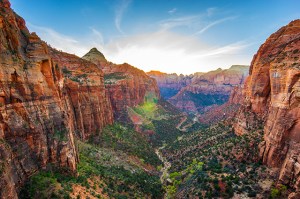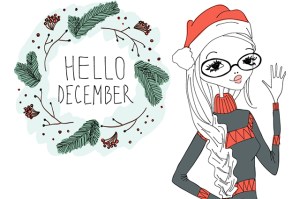A scenic marvel of mountains, islands, forests and other natural wonders, there are many reasons why Acadia is one of the ten most-visited national parks in the county. And as the only national park in the Northeast, it’s a must-see destination for local nature lovers and explorers. Use this guide to Acadia National Park to help you plan your visit.
Is the park open year-round?
Yes, Acadia National Park is open all year. From mid-April to mid-October, the park’s visitor centers and other facilities are open; during the off-season (late October to early April) only the Park Headquarters is open for services.
Where is the park located?
Acadia National Park is located on Mountain Desert Island, Isle au Haut, and the Schoodic Peninsula on the east coast of Maine.
How big is the park?
The park covers approximately 49,000 acres.
How do I get around in the park?
Most visitors drive their own cars and campers into the park. In addition, the Island Explorer bus transports riders to and from various places on Mount Desert Island, including the airport, park destinations and the local communities. During peak season it’s smart to utilize the Island Explorer service, as parking can be hard to come by.
Also, keep in mind that vehicles must display a park entrance pass while in the park.
What activities are available?
Some of the popular activities in an Acadia National Park vacation package include:
- Rock climbing: Acadia offers sea cliff climbing, which is not commonly found in other national parks. Privately run companies in the town of Bar Harbor, just outside the park, offer training and tours.
- Hiking: The park contains over 130 miles of trails to explore. Whether visitors are seeking a short walk or a day hike, Acadia National Park offers a wide variety of experiences. Because backcountry camping is not permitted in the park, multiday hikes must be planned to include campgrounds.
- Birdwatching: Several species of bird of prey and shore birds make their home in Acadia National Park. Many of the park’s trails offer great opportunities to see these creatures in action, and the park’s website has a list of the species known to live there.
- Winter sports: When winter arrives, visitors can cross-country ski and snowshoe on the forty-five miles of carriage roads throughout the park. Some roads are tracked by volunteers. Snowmobiles and fat-tire bicycles are permitted on unplowed roads only. Some winter camping is available as well.

Are pets allowed?
Pets are permitted in some campgrounds, on 100 miles of hiking trails, and forty-five miles of carriage roads. They are not allowed on beaches, in public buildings or on ranger-led activities.
Is the park accessible?
Several trails and carriage roads in Acadia National Park are accessible, as are some of the park’s main sites, such as Thunder Hole and Cadillac Mountain.
What accommodations are available?
While there are no lodging facilities within Acadia National Park itself, the neighboring communities have numerous accommodations ranging from high-end hotels to less expensive motels. The park does have several campgrounds with spaces for tents and RVs. The surrounding area also has multiple private campgrounds with varying facilities.
Are there restaurants in the park?
Acadia National Park has one dining facility, Jordan Pond House, which serves lunch and dinner from mid-May until late October. Numerous restaurants and grocery stores can be found in the towns outside the park.
What are the most popular areas of the park?
- Cadillac Mountain: Rising to 1,530 feet, Cadillac Mountain is the highest point in the park as well as the tallest mountain on the east coast of the United States. Visitors can drive up a three-and-a-half-mile road to the summit or hike up one of the trails. Vehicle reservations are required for Cadillac summit during select months (in addition to a park entrance pass).
- Park Loop Road: This twenty-seven-mile road leads visitors throughout the park, offering views of the ocean shore, forests, and mountains. Most of the road is open from mid-April through November, though a short portion of the loop is open year-round.
- Thunder Hole: This small inlet carved into rock demonstrates the ocean’s power. When an incoming wave hits the inlet, it displaces the air and water already there, creating a loud clap, much like thunder. Water shoots out of the top, sometimes as high as 40 feet, creating quite the display.
- Isle au Haut: This small island off the coast of Stonington, south of Mount Desert Island, offers camping, hiking, and fishing in a tranquil environment, reminiscent of older times. Acadia National Park takes up half of the island, whereas the other half is privately owned land.
- Sand Beach: Though this yellow-sand beach on the east side of Mount Desert island may look inviting, be prepared – the ocean water in Maine rarely gets above 55 degrees Fahrenheit, so swimming can be a bracing experience.
Plan your national park vacation with the help of a AAA travel advisor.
Which national park would you like to visit most? Is Acadia National Park on your list? Tell us in the comments.
2 Thoughts on “Guide to Acadia National Park”
Leave A Comment
Comments are subject to moderation and may or may not be published at the editor’s discretion. Only comments that are relevant to the article and add value to the Your AAA community will be considered. Comments may be edited for clarity and length.
















Is it possible to see the Aurora Borealis or Northern Lights from Acadia National Park?
Hi Linda!
I’ve done a bit of internet sleuthing, and it seems like it’s very rare to see the northern lights in Acadia. But it has happened! The park’s site has an excellent section on stargazing – I’d suggest checking it out and contacting someone at the park if you have further questions. Apparently it’s quite a great place to see the stars because of the lack of light pollution.
Thanks for reading!
– Dana L.